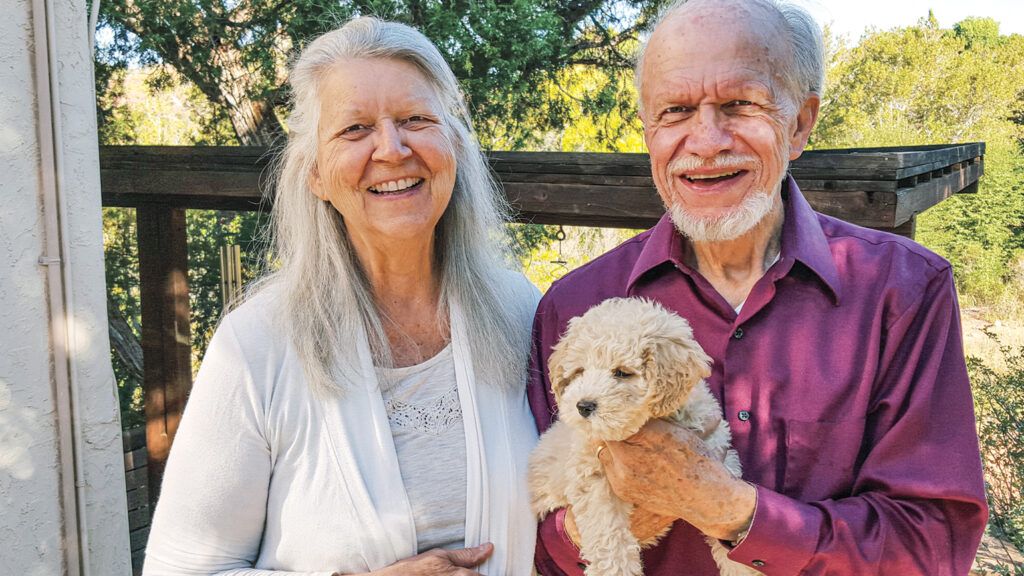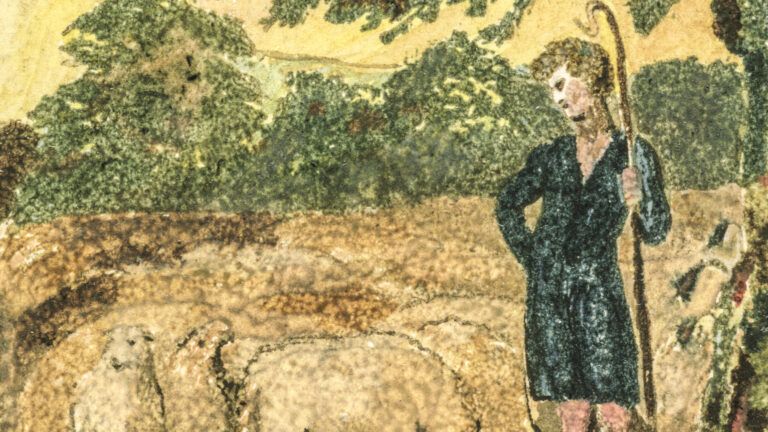“Ross, come here! Look at this!” I motioned to the computer screen. Sweet puppy faces with big brown eyes stared back from dozens of photos. They were the cutest things I’d ever seen.
My husband groaned. “Beth, I really want a small dog.”
“These are smaller,” I said. “These aren’t full-size goldendoodles. They’re petite goldendoodles. See?”
Gabby, our beloved toy poodle, had passed away last year. He’d lived a long life for such a little dog—17 years. I’d always been a dog person, and the house didn’t feel right without one. Ross agreed. Where we disagreed was the type of dog.
Ross wanted a low-maintenance lap dog, and he did have a point. He and I both had full-time jobs—I was a wildlife photographer who owned a gallery, and Ross worked at a nonprofit. Plus, we were getting on in years, and Ross wasn’t in the greatest health. A few years back, he’d suffered a massive heart attack and undergone a quadruple bypass surgery. It had been terrifyingly touch and go for a while, but slowly, with a lot of physical therapy, he’d recovered. Still, he didn’t want to take on the kind of long walks a large dog would require.
But I’d recently met our neighbor’s new goldendoodle—a crossbreed between a golden retriever and a poodle—and been smitten. I’d had both breeds and loved them equally. So when I found out about “petite” goldendoodles, which max out at 25 pounds, it felt like a home run. It wasn’t exactly the lap dog Ross wanted, but it seemed like a manageable compromise.
I found a breeder nearby and scheduled an appointment. Ross was won over (I knew it!), and a few months later, we took home our precious goldendoodle puppy. We named her Sunny.
The plan was to bring Sunny to work with me at the gallery. I’d set up a doggie playpen for her there, out of the way of customers.
Sunny quickly figured out how to climb out of the mesh playpen. She’d tear around the gallery, full of puppy energy. Adorable? Yes. Disruptive? Totally. Not everyone wanted to deal with a rambunctious puppy while browsing photo prints.
“A dog like that needs to be walked multiple times a day,” one of my regular customers remarked.
I didn’t have the time for that. Ross’s work hours were more flexible, so he agreed to take Sunny to the office with him. He walked her for 15 minutes twice a day. It was a big change for him. A former stockbroker, he’d never kicked his bad habit of staying at his desk until the end of the workday. Ross never exercised. He used to joke that his only workout was “jumping to conclusions.”
“I haven’t had this much physical activity since my post surgery rehab,” he admitted after the first week. But the walks were undeniably helping. Sunny began to mellow out. She loved going around the park with Ross. And although Ross might not have wanted to admit it, I could tell that deep down he was enjoying himself. Even on the weekends when we were both home, Ross took the lead on taking Sunny for her twice-daily walks.
About a year after we got Sunny, it was time for Ross’s follow-up angiogram at his cardiologist’s. The procedure uses a special dye visible by X-ray to see if certain arteries are clear of narrowing or blockage.
Ross was fully conscious for the procedure, and I was allowed to sit in. We watched as the doctor injected the dye through a catheter inserted into an artery.
He studied the screen carefully, monitoring the dye’s progress. “Well, since I’ve last seen you, the one artery you didn’t have replaced has become totally blocked,” he said. But he was smiling.
“Then why are you smiling?!” Ross asked.
The doctor explained that when an artery is blocked, small vessels called collaterals sometimes grow around it, accommodating blood flow. It’s a phenomenon called autogenesis.
“It’s rare—that’s why I’m smiling. It doesn’t happen for everyone, but it has for you.”
“What makes it happen?” Ross asked.
“A lot of factors. But it’s more likely to occur in patients who partake in regular, light exercise. Like a 15-minute walk every day.”
Ross and I looked at each other. Sunny. If it hadn’t been for her, Ross wouldn’t have been walking regularly. She saved Ross’s life!
Sunny is now five years old. Fully grown, she weighs about 20 pounds. A bigger dog than Ross once wanted but, for us, the perfect size.





